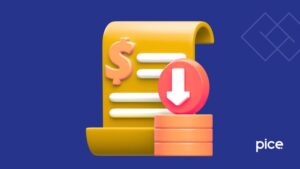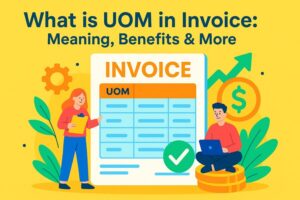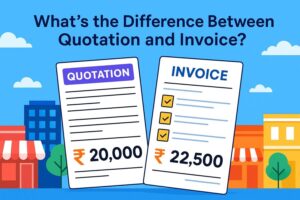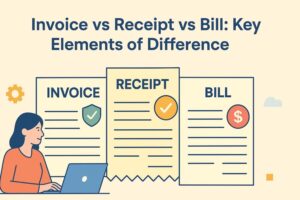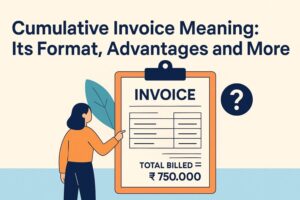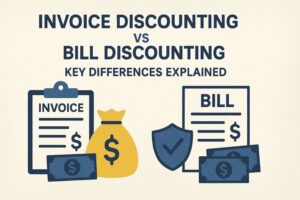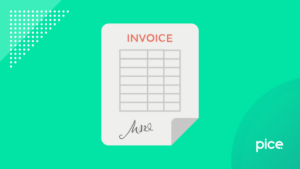Advance Payment Invoice: Meaning, Types, and Inclusions
- 6 Nov 25
- 8 mins
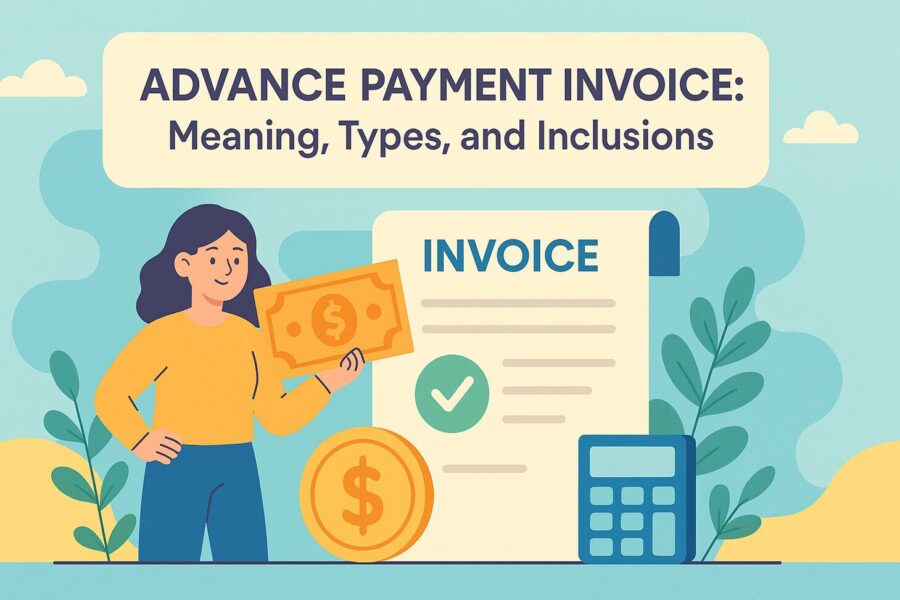
Advance Payment Invoice: Meaning, Types, and Inclusions
Key Takeaways
- Advance payment invoices allow businesses to receive funds upfront, helping manage operational costs and avoid borrowing money.
- They can represent earned revenue (partial goods/services delivered) or unearned revenue (payment received before delivery).
- Include invoice number, issue date, product/service details, tax rates, payment terms, refund policy, and seller’s bank details to ensure accuracy and compliance.
- Pros include better cash management, efficient billing, and fewer payment delays. Cons include possible refund disputes, accounting challenges, and buyer trust issues.
- Clear payment terms, detailed invoices, digital payment systems, incentives for early payment, and consistent follow-ups build client trust and ensure timely payments.
Advance payment invoices help businesses manage cash flow efficiently. As a seller, you can use them to request advance payment and avoid taking business loans by setting clear payment terms and methods.
For instance, if you are accepting customer orders worth ₹10,000, you can avoid a business loan with an advance payment of ₹5,000. Let us check out what these invoices are, their types, and things to include in such an invoice.
This will help you generate a valid and accurate Advance Invoice for your customers while keeping your financial records organised.
Advance Payment Invoice: What It Means
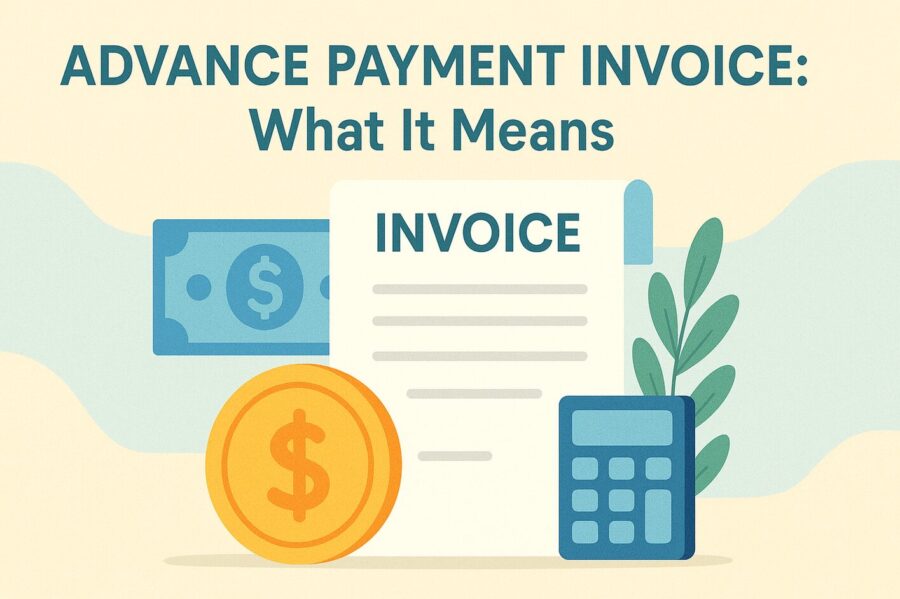
Sellers use an Advance Invoice as a formal payment request to buyers before the supply of a product or completion of a service. Often, businesses and freelancers use this invoice to ask for payment upfront, ensuring smooth invoice processing and reduced financial risk.
For instance, XYZ is an event planning company that received an order to decorate a birthday party for a 5-year-old kid. The company will require funds to arrange the equipment. Instead of waiting for the event to get over, XYZ can ask for an advance payment invoice.
However, if necessary, XYZ can request partial payment before the event using such an invoice. For example, if the event cost is approximately ₹20,000, as a seller, you can request ₹10,000 as partial advance payment. This is especially useful when working on custom goods or custom manufacturing projects with significant project costs.
Advance Payment: Types
Advance payment can be of two types: earned revenue and unearned revenue. Each of the types has different purposes and may require different payment methods. Here are the types of advance payment invoice uses:
Earned Revenue
As a seller, if you provide partial goods or services prior to issuing an invoice, you need to consider earned revenue. You must in this instance issue an Advance Invoice, on the terms agreed to be paid.
As an example, Mr A, a buyer, makes a pre-payment of 5000 rupees to Mr B, a seller, with an order of 15,000 before the order is delivered on 20 th August 2025. Under this kind of situation, Mr B will be required to take into consideration the earned revenue and revise financial records.
Unearned Revenue
When your buyer is paying the full amount before receiving goods or services then you must take into consideration unearned revenue. You send the Advance Invoice in a case whereby work is done or goods delivered.
An example is when Mr X, a buyer, pays 10000 to Mr Y, a seller, on 31st July 2025 in advance the amount of goods with the same value. But Mr Y online delivers goods of worth 10,000 on 10 th August 2025 according to the terms and conditions of order. Then Mr Y will have to take into account unearned revenue and check the correct invoice tracking.
Things to Include in an Advance Payment Invoice
To make your advance payment invoice accurate and valid, you need to include certain parameters and their details on such an invoice. This builds customer relationships and encourages trust. You need to include the following:
- A unique invoice number
- Issue date in DDMMYYYY format, for instance, 8th August 2025
- Product or service description - e.g., chairs and tables
- Quantities and unit price - such as, 5 chairs at ₹500 each and 1 table at ₹3,000
- Applicable tax rate and amount - e.g., 18% GST on ₹2,500 = ₹450
- Estimated delivery date — e.g., 20th August 2025 (after invoice issuance)
- Payment due date, acceptance of full or partial payment, and applicable Late-Payment Penalties or payment penalties
- Refund and order cancellation policies, especially for wholesale contracts
- Seller’s bank account details
- Reference to privacy policy for handling customer information
💡For your bill payments and tracking business transactions, use the PICE App.
Pros of Using an Advance Payment Invoice
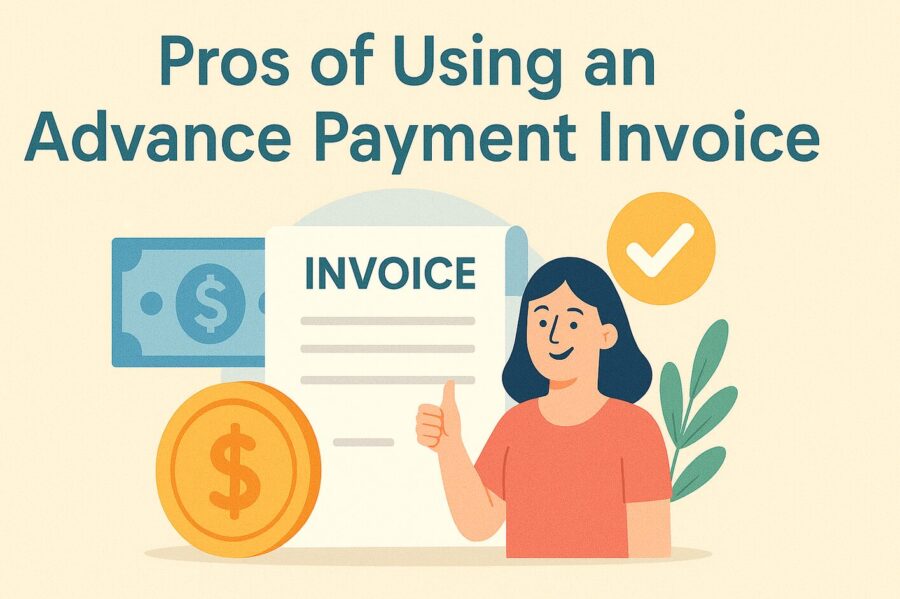
Using an advance payment invoice has several advantages for which businesses often issue this invoice. One of the advantages is to avoid business loans. The other advantages of using an advance invoice are as follows:
Eliminates Requirement of Business Loans
Advance Invoice payment also means that businesses do not need to borrow money and can enjoy the benefits of no interest charged on borrowed funds as well as better cash flow as their businesses get funds.
An example is that ABC company requires 5 lakh of money to have a project. Interest charges would be included in a loan of 8%. A loan at 8% would add interest costs. However, receiving ₹3 lakh through online invoicing using Stripe Invoicing can keep business finances healthy without additional debt.
Includes Expenses Efficiently
Advance payment invoices allow businesses to receive payment beforehand, minimising financial risks and burdens for business expenses.
Eliminates Payment Chasing
Advance payments reduce late payment concerns and the need for payment chasing after project completion, easing business workload.
Efficient Billing
As a business, you can simplify the billing process with advance payment invoices. It allows automation of invoices, eliminating follow-ups for invoice payment.
Cons of Using an Advance Payment Invoice
Besides the pros, advance invoices have some cons as well. Nonetheless, it is possible to enjoy the fruits of such invoices without any inconvenience by dealing with the cons in a proper manner. The disadvantages of advance invoices are the following:
Refund and Disputes
In case the buyer is not met with his or her needs even after the advance has been paid there may be conflict between the buyer and the seller. In this case, the buyer may insist on getting back the advance that the seller has already lost in the equipment preparation of the goods and services. As a result, this creates challenges for sellers, affecting the relationship with the buyer.
Challenges in Accounting
Dividing the payment into an advance payment and a post-delivery payment might create challenges at times. As a seller, you might encounter challenges in tracking accounts pertaining to remaining payment collection.
Trust Problems
As a seller, you might implement a policy for advance payment from buyers. However, new customers might face trust issues with advance payment before they receive goods or services. It is essential to build a trusted relationship with your buyers before asking for an advance payment.
Difference Between Advance Billing and Billing in Arrears
| Advance Billing | Billing in Arrears |
| It ensures that sellers have adequate funds for their work. | As a seller, you need to focus on providing quality goods and services before asking for payment. |
| No follow-up is required upon work completion | Upon work completion, you need to contact the buyer |
| Risk of refund initiation if buyers are dissatisfied | No risk of refund |
| Suitable for event planning companies, SaaS companies and consulting services | Suitable for contractual or freelance services |
5 Best Practices for Advance Billing
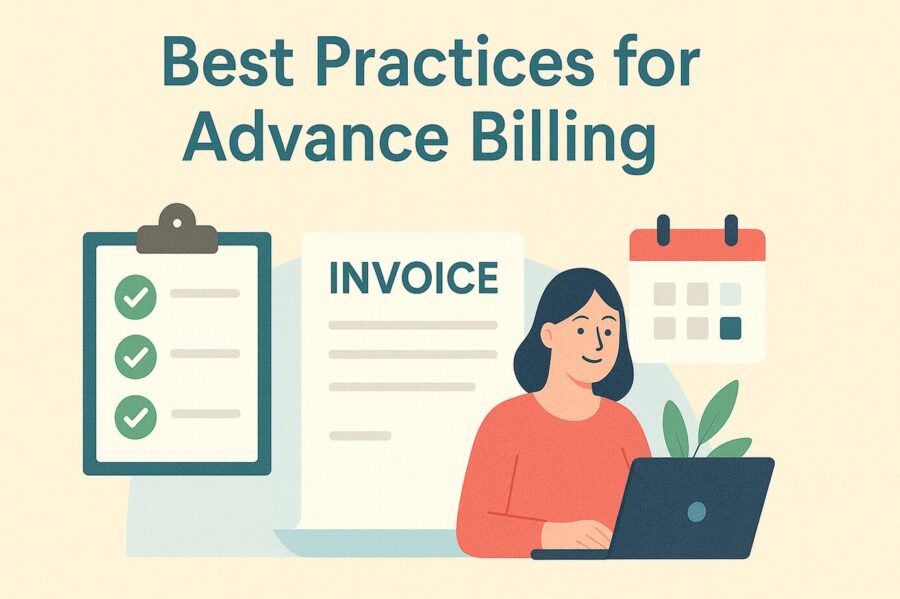
1. Set Clear Terms
Define payment timelines, amounts, and conditions in writing before starting work. Clear communication prevents misunderstandings and ensures clients know exactly when and how much to pay.
2. Use Detailed Invoices
Include itemised services, dates, and agreed-upon rates. A detailed invoice builds transparency, reduces disputes, and reassures clients about the value they are receiving for their advance payment.
3. Leverage Digital Payment Systems
Embrace secure and easy to use payment gateways. Fast, easy payment choices promote prompt business and enhance speediness of business and also ease the advance billing process between clients and companies.
4. Offer Incentives for Early Payment
Give minor discounts or optional benefits to clients who make advances before date. This is a way of bonding and making the client pay on time without coercing them.
5. Maintain Consistent Follow-ups
Send polite reminders before payment due dates. Consistent follow-ups keep billing top-of-mind, reduce the risk of late payments, and show professionalism without damaging client relationships.
Conclusion
An advance payment invoice improves cash flow, supports business finances, and reduces Days Sales Outstanding. For industries like SaaS, event management, or custom manufacturing, using Advance Invoice systems with proper invoice tracking and a clear privacy policy ensures smooth transactions and reduced financial risk. Always include correct bank account details, follow your payment methods policy, and comply with wholesale contracts terms.







